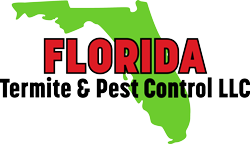The national cost of termite damage in the U.S. is staggering, with drywood termites alone responsible for an estimated $1 to $2 billion in damage each year. This amount includes not only the expense of repairing affected buildings and homes but also the significant costs associated with prevention and treatment. Preventing drywood termite infestations typically requires professional inspections, fumigation, or localized treatments, all of which can be quite costly.
Damage Caused By Drywood Termites
- Wood Damage - Drywood termites feed from the inside out, hollowing out wood and leaving behind small holes or exit tunnels. At first, the damage may seem minor—just some discoloration or slight surface wear—but over time, it can become extensive, compromising the strength of the wood. They can chew through support beams, flooring, trim, furniture, and even the framing inside walls and ceilings.
- Compromised Structural Integrity - In more advanced infestations, drywood termites can seriously weaken a building’s structure. Large or long-established colonies may cause sagging floors, weakened walls, and in extreme cases, structural collapse.
- Cosmetic and Surface Damage - Though most of the damage occurs internally, drywood termites also leave visible signs—such as tiny exit holes and frass (termite droppings)—that can affect the appearance of wood surfaces and fixtures.
- Furniture and Interior Fixtures -
Wooden furniture, cabinets, and other built-in features are also at risk. Without prompt treatment, drywood termite activity can permanently damage or destroy these items.
Drywood Termite Control And Prevention
Drywood termite infestations typically require the help of a licensed pest control professional. Treatment can be costly, especially for larger infestations, and may involve full-house fumigation or targeted treatments depending on the severity and spread.
Fumigation is often the best choice when drywood termites are widespread or the full extent of the infestation is unknown. Here's why:
- Thorough Penetration: The fumigant gas reaches deep into all areas of the structure, including hidden voids and inaccessible wood.
- Complete Colony Elimination: It kills termites in all life stages—eggs, larvae, and adults—ensuring the entire colony is eradicated.
- No Structural Damage: Unlike liquid treatments that may require drilling, fumigation does not damage your home.
- High Success Rate: When properly executed, fumigation provides the most reliable, comprehensive results.
Spot Treatment is best when the infestation is small and isolated, a spot treatment is a practical, less disruptive, and a more affordable solution:
- Targeted Elimination: Treatment is applied directly to the infested area—often through localized injections or heat.
- Minimal Disruption: You typically do not need to vacate the home or prepare extensively.
- Faster and Lower Cost: Ideal for early detection or minor infestations.
Important Customer Notes for Spot Treatments:
Leave Frass (Pellets) Undisturbed: These droppings help us pinpoint the active area and deliver treatment more accurately. Do not clean them up until after treatment is completed.
No Warranty on Spot Treatments: Drywood termites can establish multiple, independent colonies within the same area—such as a single door, wall, or window frame. Treating one site does not guarantee that others aren’t present or won't emerge later.
Follow-Up May Be Needed: Additional inspections or treatments may be necessary if new activity appears in untreated areas.
Drywood Termite Activity In Central Florida
Drywood termites are active year-round in Central Florida, but their swarming season typically peaks from May to August. This is when mature colonies release winged reproductives (alates) to start new colonies. Swarming is triggered by warm, humid weather—common in Florida during late spring and summer.
Even outside of swarming season, drywood termites remain active, feeding inside the wood and causing damage without visible signs. Because of this, monitoring and early detection are key.
Frequently Asked Questions About Home Pest Control
Q1. How do I know if I have a drywood termite infestation?
A1. Common signs include small piles of wood-colored droppings (called frass), tiny holes in wood surfaces, or occasionally seeing winged termites (alates) during swarming season. Unlike subterranean termites, drywood termites don’t require soil contact and live entirely within the wood they infest.
Q2. Is fumigation always necessary for drywood termites?
A2. Not always. Fumigation is recommended for widespread or hidden infestations, but if the issue is small and localized, a spot treatment may be effective. Our team can evaluate the severity and recommend the most appropriate approach.
Q3. Why can’t you offer a warranty on spot treatments?
A3. Drywood termites can form multiple, separate colonies within the same piece of wood or structure. Spot treatments target known activity but may not reach hidden or future colonies. Because of this, we don’t offer a warranty unless the entire structure is treated through fumigation.
All Rights Reserved | Florida Termite and Pest Control
